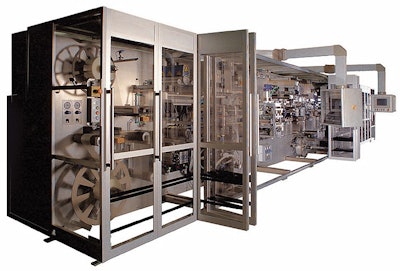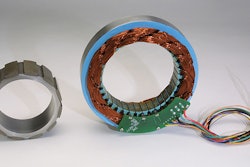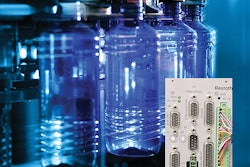
Make2Pack makes sense
It began with a brainstorming session in January 2004 between OMAC Packaging Workgroup and World Batch Forum members at the annual ARC Automation Forum. Why not integrate batch processing more closely with packaging?
The potential is for product to be more efficiently manufactured and packaged according to customer demand.
Now it’s officially called Make2Pack a joint working group of the two groups and the ISA’s SP88 committee. Their charter is to define a new ISA standard tentatively Part 4 of the ISA/ANSI S88 standard and its European equivalent IEC 61512.
How packaging can streamline the supply chain
While the group is actively hashing out the technical details of architecture data structures and functionalities the business rationale is much easier to understand.
Most food beverage pharmaceutical and household products involve a small number of basic formulations in comparison to the SKUs generated by multiple package configurations. There are many reasons behind the profusion of packages ranging from consumer market segmentation to country requirements to retailers’ specifications.
By better synchronizing production with packaging smaller batches can be made with less lead time. This brings manufacturing a step closer to the goal of “make to order” instead of making the anticipated products and packages to stock. This also has the impact of reducing inventory and the potential for waste of perishable items.
ELAU’s global marketing manager John Kowal believes that packaging automation’s potential to help manage the supply chain is not always fully appreciated by business planners. In the CPG he figures that packaging proliferation is a critical bottleneck. For example the bulk of a carbonated beverage maker’s market is traditional cola not the flavored variations designed to add a point of share. But the power of knowing how much to make on a given day in 300 or 355 ml cans in half liter liter and 2-liter PET 6 vs. 12 vs. 24 vs. 30 packs in cases vs. trays vs. shrink bundles etc. is the true measure of flexibility.
Back to basics
“Make2Pack closes what our working group has identified as organizational and business process gaps between manufacturing operations” says Kowal one of the original developers of the charter. “In the course of our discussions we’re discovering that the actual technological differences between batch processes and discrete operations -- such as packaging and material handling -- are not so great as the semantic distinctions.
“It’s like the word ‘actual’ itself. When I say ‘actual data’ I mean real as opposed to theoretical such as the past 12 months’ results. If a German speaking colleague hears me say ‘aktuel data’ he is thinking ‘current’ as in today’s results. That’s an incredibly important nuance. We have the same potentials for misunderstanding between different manufacturing operations.
“That’s why we’re clarifying really basic things right now such as where the OMAC PackML state model fits in the scheme of World Batch Forum’s definitions of S88 structures. And guess what? The difference is that the state model resides one level higher in a packaging machine than in a process control module. Once you nail down what’s different what’s the same and what to call things everything else is possible.”
The benefits of Make2Pack are exponential
One of World Batch Forum’s longtime goals is to improve the modularity of control software compared to monolithic ladder logic the so-called “spaghetti code.” The IEC 61131-3 standard can do just that. ELAU’s Kowal is quick to point out that the company has offered its customers a modular programming template and IEC conforming software library embodying Best Practices since 1998. It now appears that this can serve as an example for the control industry.
Why is modularity important? “Modular software begets modular mechanical design” is Kowal’s mantra. “That allows OEMs to cost effectively develop customized machines from standard modules. It allows packagers to reconfigure modules rather than buying single-purpose machines. It means that software modules are reusable reducing development and validation costs as well as learning curves for operators and maintenance technicians. And it means that these people can be cross-trained to work in either department.”
Make2Pack will make it easier to horizontally integrate manufacturing and packaging – meaning to network and synchronize the whole line matching line speeds to conditions. Likewise much M2P work is centered around vertical integration – the interfaces needed for equipment to provide good information for production management systems.
For information visit www.wbf.org or www.omac.org.
Contact ELAU at [email protected] or visit www.elau.com. (ELAU is a member of the Make2Pack working group World Batch Forum and OMAC Packaging Workgroup as well as PLCopen which promotes the IEC 61131-3 standard).

























